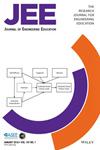Mental health and treatment use in undergraduate engineering students: A comparative analysis to students in other academic fields of study
Abstract
Background
Engineering students experience high levels of distress and low rates of mental health treatment seeking, yet there is a gap in knowledge around how this compares with that of students in other fields of study. Given the influence of social identity (e.g., gender identity, race/ethnicity) on mental health and treatment seeking, it is important to account for sociodemographic variation across fields when performing such comparisons.
Purpose
This study used Andersen's Behavioral Model to compare mental health distress and treatment use between students in engineering and other fields while controlling for sociodemographic factors.
Methods
Survey data came from the 2021–2022 Healthy Minds Study (N > 50,000). Measures related to mental health, treatment use, and diagnosis were examined. Descriptive statistics were determined for each field of study, and regression analyses were used to assess differences across fields while accounting for covariates.
Results
Compared to students from other fields, engineering students were among the least likely to report symptoms of depression and anxiety. However, 44.4% of undergraduate engineering students screened positive for current depression and/or anxiety. Of those who screened positive, only 40.4% had received therapy/counseling in the past year. Further, they were the least likely to have received a depression or anxiety diagnosis when compared to students from other fields.
Conclusion
When controlling for sociodemographic factors, undergraduate engineering students reported lower rates of mental health distress and treatment use compared to students in other fields. This study highlights the need for considering engineering culture in the interpretation of student mental health and treatment.


 求助内容:
求助内容: 应助结果提醒方式:
应助结果提醒方式:


